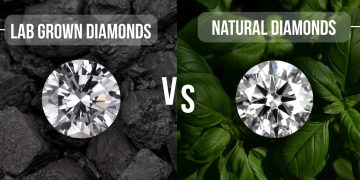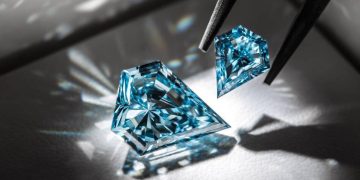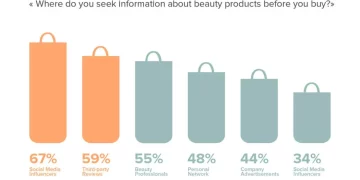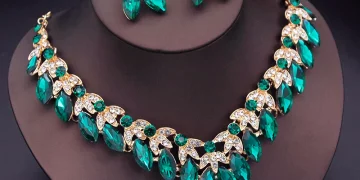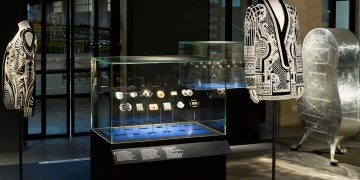The jewelry market, known for its timeless appeal, has been evolving rapidly over the last decade, shaped by various economic, technological, and social shifts. As we look ahead to 2025, the jewelry industry is poised for significant growth, fueled by emerging trends that reflect changing consumer behaviors, technological advancements, and global economic dynamics. These trends are set to shape the way jewelry is designed, marketed, and consumed. This article delves into the emerging trends that are likely to drive the growth of the jewelry market in 2025.
1. The Rise of Sustainability and Ethical Practices
A. Sustainable Sourcing of Materials
Sustainability has moved from being a niche interest to a mainstream demand. In 2025, sustainable sourcing will be one of the primary growth drivers for the jewelry industry. Consumers, especially younger generations, are increasingly concerned with the environmental impact of their purchases and are gravitating toward brands that prioritize ethical sourcing and eco-friendly practices.
Luxury jewelry brands are adapting by incorporating recycled metals, lab-grown diamonds, and ethical gemstones into their collections. Brands like Chopard, Tiffany & Co., and Bvlgari are already making strides in this direction by offering products made from Fairmined gold, recycled platinum, and conflict-free diamonds. This trend is expected to grow, as more consumers demand transparency and accountability from the brands they support.
The shift towards sustainability is not only about sourcing materials responsibly but also about adopting sustainable manufacturing processes. Jewelry companies are embracing energy-efficient technologies, reducing waste, and seeking carbon-neutral certifications, all of which will drive the industry forward in 2025.
B. Lab-Grown and Ethical Gemstones
The demand for lab-grown diamonds and ethical gemstones is predicted to surge in 2025. As consumers become more educated about the environmental and social impacts of mined gemstones, they are opting for synthetic diamonds and gemstones that are created with minimal environmental harm. These options not only meet the growing demand for sustainability but also offer affordable luxury, making high-quality gemstones more accessible.
Lab-grown diamonds, in particular, are gaining traction due to their ability to offer the same aesthetic appeal and durability as mined diamonds, without the associated ethical concerns. Brands like Brilliant Earth and Vrai are capitalizing on this trend, providing consumers with high-quality lab-grown diamond jewelry that resonates with their desire for sustainability.
2. Digitalization and the Rise of Online Jewelry Shopping
A. E-Commerce and Online Customization
The digital transformation of the jewelry market is accelerating, and by 2025, online jewelry sales are projected to make up a significant portion of the total market. E-commerce platforms are becoming increasingly sophisticated, offering consumers a seamless shopping experience that includes customization tools, virtual try-ons, and easy return policies.
The ability to customize jewelry online is a growing trend that empowers consumers to create unique pieces without ever stepping foot in a store. Through virtual platforms, customers can select materials, gemstones, and designs that fit their preferences, and some brands even offer augmented reality (AR) features that let consumers see how the pieces would look when worn.
Additionally, the ability to shop online has opened up global markets for jewelry brands, allowing them to reach customers in new regions where physical retail stores may not have been previously established.
B. Virtual and Augmented Reality in Jewelry Shopping
Virtual reality (VR) and augmented reality (AR) are transforming the way consumers shop for jewelry. These technologies allow customers to virtually “try on” jewelry without physically handling it, providing a more immersive and interactive shopping experience. This trend is set to grow in 2025, as advancements in AR/VR technology continue to improve.
For example, Tiffany & Co. has already introduced AR features that let customers virtually try on pieces from their collection through their mobile app. Such technologies enhance the convenience and personalization of online shopping, giving consumers confidence in their purchases.
Moreover, the growing interest in digital jewelry and NFT jewelry (non-fungible tokens) is expanding the scope of virtual jewelry. In 2025, more jewelry brands are expected to venture into the metaverse, offering virtual jewelry collections that customers can buy, wear, and trade in online environments. This blend of technology and luxury will create a new, exciting frontier in the jewelry market.
3. Personalization and Custom Jewelry
A. The Demand for Personalized Pieces
Consumers are increasingly seeking personalized and meaningful jewelry that reflects their individuality, milestones, or personal style. This trend will continue to fuel market growth in 2025, as more people turn to custom jewelry options for important life events such as engagements, weddings, birthdays, and anniversaries.
The ability to engrave or customize designs, whether through nameplates, birthstones, or symbols of personal significance, has already become a popular trend. High-end brands like David Yurman and Harry Winston offer bespoke services that cater to the growing demand for personal expression through jewelry.
As 3D printing technology advances, brands will also be able to offer more complex and intricate custom designs that can be made to order quickly and efficiently. Consumers will increasingly expect brands to provide options for self-expression through bespoke pieces that are crafted specifically for them.
B. Jewelry as Storytelling
The concept of storytelling in jewelry is also becoming more important. Consumers are not only looking for jewelry that looks beautiful, but they also want pieces that tell a story or carry emotional significance. This could mean incorporating elements that represent key moments in a person’s life, such as family heirlooms, birthstones, or symbols of personal values.
Brands like Pandora have been successful in tapping into this trend, offering customizable charm bracelets where consumers can select charms that represent their experiences, values, and memories. This trend is expected to grow in 2025, with more brands offering personalized jewelry that serves as a narrative medium for customers to express their personal stories.
4. The Intersection of Jewelry and Technology
A. Smart Jewelry and Wearables
One of the most significant emerging trends in the jewelry market is the integration of technology into traditional jewelry design. Smart jewelry—pieces that combine luxury with technological functionality—has become a rapidly growing segment.
Smart rings and smart bracelets that monitor health metrics, track activity, or provide notifications are already on the market. For example, Oura Ring has gained popularity as a wearable fitness tracker that combines technology with sleek, minimalist design. Jewelry brands are increasingly incorporating smart technology into their offerings, and this trend will gain further momentum by 2025.
In addition to health-focused features, wearable jewelry will increasingly serve other purposes, such as contactless payment, GPS tracking, and enhanced connectivity. By merging technology and aesthetics, jewelry brands are appealing to a younger, tech-savvy consumer base that seeks both functionality and style.

5. The Growth of the Men’s Jewelry Market
A. Expanding Male Consumer Base
In recent years, the jewelry industry has seen an increasing interest in men’s jewelry, and this trend is expected to continue growing through 2025. Traditionally, men’s jewelry was limited to wedding bands, watches, and occasional cufflinks. However, today, many men are embracing necklaces, bracelets, earrings, and rings as part of their personal style.
Brands like Cartier, Bvlgari, and Gucci are already tapping into this growing market by offering more extensive collections of men’s jewelry. As fashion trends evolve and men become more comfortable with self-expression through accessories, the demand for men’s jewelry is set to increase in 2025.
The influence of pop culture, including musicians, athletes, and social media influencers, is playing a significant role in driving the popularity of men’s jewelry. The expansion of this market will provide jewelry brands with new avenues for growth, both in terms of product offerings and marketing strategies.
Conclusion: The Future of the Jewelry Market in 2025
The jewelry market in 2025 is expected to grow rapidly, fueled by a variety of emerging trends that reflect shifting consumer demands, technological innovations, and evolving values. Sustainability, personalization, digitalization, and smart jewelry are some of the key drivers of growth. Additionally, the rise of men’s jewelry and the integration of technology into traditional designs will open up new opportunities for brands to expand their reach.
As consumers continue to seek more meaningful, personalized, and sustainable options, jewelry brands that can adapt to these trends will be well-positioned for success in the competitive landscape of 2025. By staying attuned to changing preferences and embracing innovation, the jewelry market is poised to experience exciting growth in the years to come.

